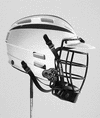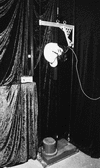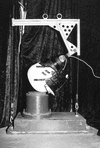Lacrosse Helmet Designs and the Effects of Impact Forces
- PMID: 12937430
- PMCID: PMC164340
Lacrosse Helmet Designs and the Effects of Impact Forces
Abstract
OBJECTIVE: To examine the effects of repetitive impact forces on lacrosse helmets and increase awareness of helmet safety standards about reconditioning and recertification practices. DESIGN AND SETTING: The independent variables for this study consisted of 4 lacrosse helmets of various design: 2 contemporary helmets (Sport Helmets Cascade and Cascade Air) and 2 traditional helmets (Sport Helmets Ultralite and Bacharach Ultralite). The dependent variable was attenuation of impact forces as measured by the Gadd Severity Index (GSI). Helmets were tested at an independent testing facility certified by the National Athletic Equipment Reconditioners Association. MEASUREMENTS: Helmets were raised to 152 cm and released onto an anvil padded with a 1.27-cm rubber modular elastomer programmer. Ten treatments to a front (FD) and right rear boss drop site (RD) were performed. A triaxial accelerometer within the head form measured impact force. Peak acceleration data were integrated into the GSI. We performed a 1-way analysis of variance and calculated descriptive statistics and the Tukey post hoc test. RESULTS: A statistically significant difference was seen in FD GSI score (F(3,36) = 9.680, P <.05) and in the RD GSI score (F(3,36) = 28.140, P <.05) between helmet types. Mean GSI scores were 1166.1, 1117.6, 857, and 1222.8 for the FD and 974.5, 1022.1, 1376.3, and 1496.5 for the RD for Sport Helmets Cascade, Cascade Air, Ultralite, and Bacharach Ultralite, respectively. With repetitive drops, GSI scores increased, indicating a greater chance for cerebral injury. Percentage increases in GSI scores from drops 1 to 10 were 48.8, 54.3, 45.6, and 18.8 on the FD and 22.6, 35.9, 71.7, and 57.4 on the RD for the Sport Helmets Cascade, Cascade Air, Ultralite, and Bacharach Ultralite, respectively. CONCLUSIONS: Our findings indicate differences between helmets at the 2 drop sites and decreasing capacity of the helmets to dissipate forces with repetitive impacts.
Figures










References
-
- Sosin D M, Sniezek J E, Thurman D J. Incidence of mild and moderate brain injury in the United States, 1991. Brain Inj. 1996;10:47–54. - PubMed
-
- Naunheim R S, Standeven J, Richter C, Lewis L M. Comparison of impact data in hockey, football, and soccer. J Trauma. 2000;48:938–941. - PubMed
-
- Matthews L S, Michael R H. Lacrosse. In: Fu F H, Stone D A, editors. Sports Injuries: Mechanisms, Prevention and Treatment. Williams & Wilkins; Baltimore, MD: 1994. pp. 469–479.
-
- Kulund D N, Schildwachter T L, McCue F C, III, Gieck J H. Lacrosse injuries. Physician Sportsmed. 1979;7(5):83–90. - PubMed
-
- Casazza B A, Rossner K. Baseball/lacrosse injuries. Phys Med Rehabil Clin N Am. 1999;10:141–157. - PubMed
LinkOut - more resources
Full Text Sources
Miscellaneous
